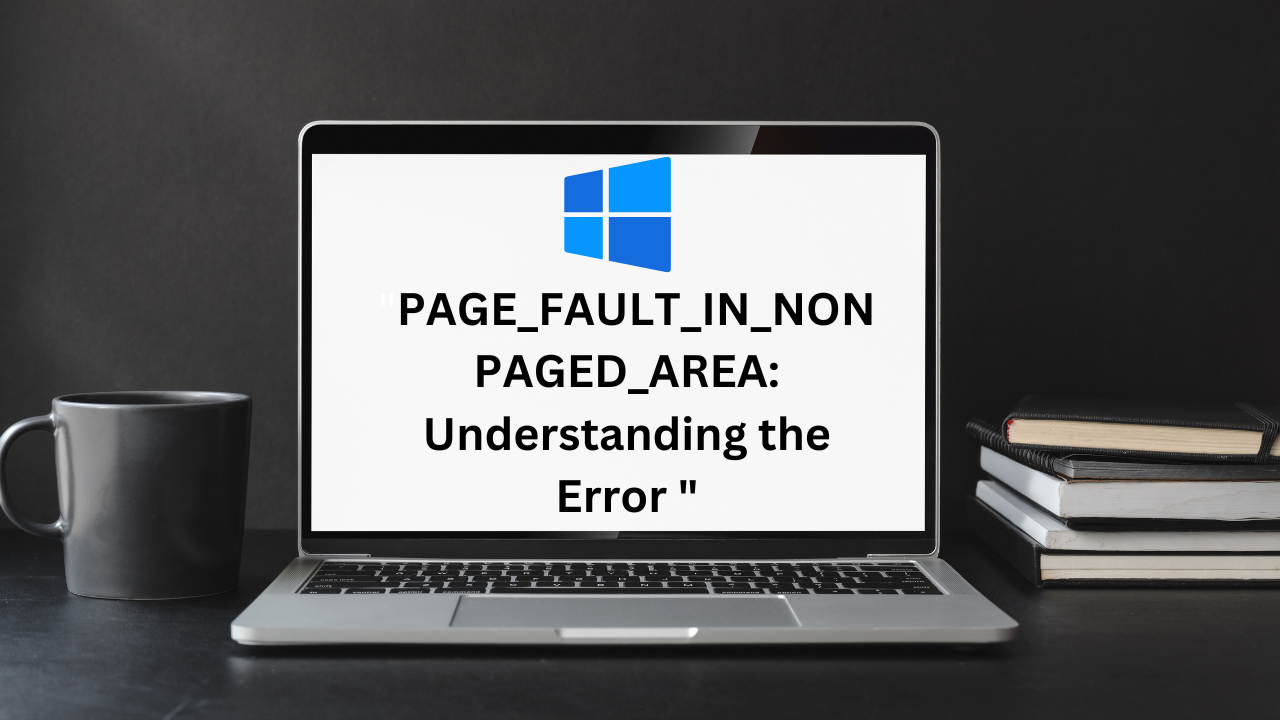PAGE_FAULT_IN_NON_PAGED_AREA is a common stop error, also known as the Blue Screen of Death (BSOD). It typically occurs when a computer is unable to locate data in the non-paged area of the memory. This can be caused by various factors such as hardware issues, driver problems, or corrupted system files.
In this article, we will delve into the common PAGE_FAULT_IN_NON-PAGED_AREA errors, their causes, and effective solutions to resolve them.
Understanding PAGE_FAULT_IN_NONPAGED_AREA
Most of the time The problem might be caused by hardware or software and does not occur randomly. It usually occurs after changing RAM or graphics cards, updating Windows or apps, or installing anything new.
What causes PAGE_FAULT_IN_NON-PAGED_AREA?
This error can be triggered by several factors, including:
- Software conflicts: Incompatibilities between software programs or faulty drivers can lead to memory access issues.
- Faulty hardware: Malfunctioning RAM modules or other hardware components can cause memory-related errors.
- Corrupted system files: Damage to critical system files can disrupt the normal functioning of memory allocation.
Common Scenarios Triggering the Error?
Understanding the common scenarios that trigger the PAGE_FAULT_IN_NON-PAGED_AREA error can help in diagnosing and resolving the issue effectively:
Software conflicts
Sometimes, installing new software or updates can lead to conflicts with existing programs, resulting in memory access errors.
Faulty hardware
Issues with hardware components, such as RAM modules or hard drives, can cause memory-related errors like PAGE_FAULT_IN_NON_PAGED_AREA.
Corrupted system files
Damage to system files due to malware infections or improper shutdowns can also contribute to memory access issues.
How to Identify PAGE_FAULT_IN_NON-PAGED_AREA
Recognizing the signs of PAGE_FAULT_IN_NON-PAGED_AREA is the first step towards resolving the issue.
Error messages and symptoms
Common symptoms of this error include sudden system crashes accompanied by a blue screen with the error message “PAGE_FAULT_IN_NON_PAGED_AREA.” Additionally, you may experience frequent system freezes or slowdowns.
Troubleshooting Methods
Once you've identified the PAGE_FAULT_IN_NON-PAGED_AREA error, there are several troubleshooting methods you can try to resolve it:
Update drivers and software
Ensure that all device drivers and software programs are up to date. Outdated drivers or incompatible software can contribute to memory access errors.
Check hardware components
Perform a thorough inspection of your hardware components, including RAM modules, hard drives, and peripheral devices. Replace any faulty components to eliminate hardware-related issues.
Run system file checker.
Use the built-in System File Checker (SFC) tool to scan and repair corrupted system files. This can help resolve issues related to damaged system files.
Advanced Troubleshooting Techniques
In some cases, advanced troubleshooting techniques may be required to resolve the PAGE_FAULT_IN_NON-PAGED_AREA error:
Memory diagnostic tools
Use memory diagnostic tools, such as Windows Memory Diagnostic or Memtest86, to test the integrity of your RAM modules. This can help identify any faulty memory modules causing the error.
System Restore
Perform a system restore to revert your system to a previous stable state. This can help undo any recent changes that may have contributed to the error.
Safe mode troubleshooting
Boot your system into Safe Mode and perform troubleshooting steps from there. This can help isolate the issue by loading only essential drivers and services.
Prevention Tips
To minimize the risk of encountering the PAGE_FAULT_IN_NON-PAGED_AREA error in the future, consider implementing the following prevention tips:
- Regular system maintenance: Keep your system clean and free from dust to prevent hardware overheating.
- Installing updates: Stay up to date with the latest software updates and security patches to ensure system stability.
- Using reliable hardware: Invest in high-quality, reliable hardware components to minimize the risk of hardware-related issues.
